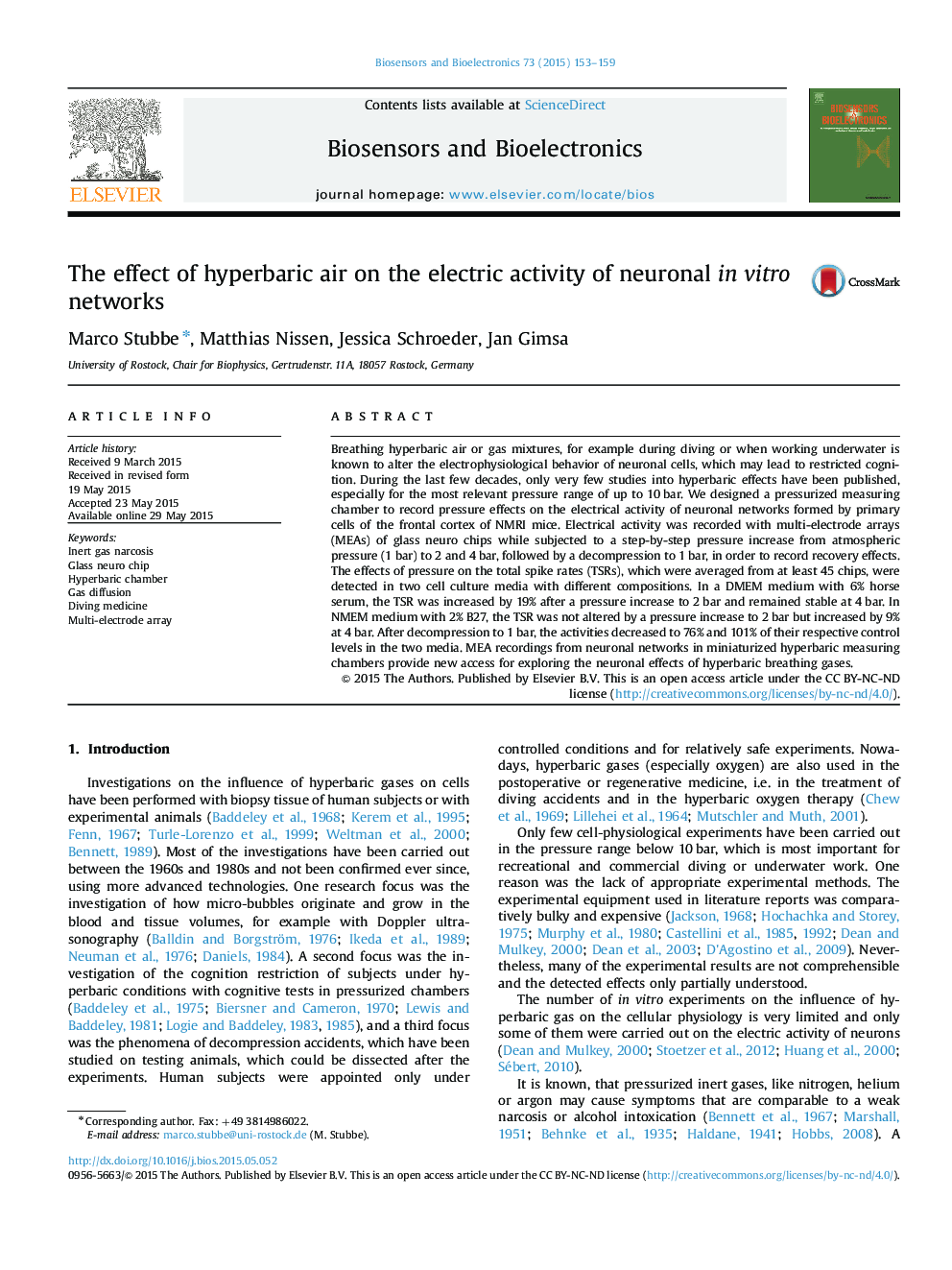| Article ID | Journal | Published Year | Pages | File Type |
|---|---|---|---|---|
| 7231672 | Biosensors and Bioelectronics | 2015 | 7 Pages |
Abstract
Breathing hyperbaric air or gas mixtures, for example during diving or when working underwater is known to alter the electrophysiological behavior of neuronal cells, which may lead to restricted cognition. During the last few decades, only very few studies into hyperbaric effects have been published, especially for the most relevant pressure range of up to 10Â bar. We designed a pressurized measuring chamber to record pressure effects on the electrical activity of neuronal networks formed by primary cells of the frontal cortex of NMRI mice. Electrical activity was recorded with multi-electrode arrays (MEAs) of glass neuro chips while subjected to a step-by-step pressure increase from atmospheric pressure (1Â bar) to 2 and 4Â bar, followed by a decompression to 1Â bar, in order to record recovery effects. The effects of pressure on the total spike rates (TSRs), which were averaged from at least 45 chips, were detected in two cell culture media with different compositions. In a DMEM medium with 6% horse serum, the TSR was increased by 19% after a pressure increase to 2Â bar and remained stable at 4Â bar. In NMEM medium with 2% B27, the TSR was not altered by a pressure increase to 2Â bar but increased by 9% at 4Â bar. After decompression to 1Â bar, the activities decreased to 76% and 101% of their respective control levels in the two media. MEA recordings from neuronal networks in miniaturized hyperbaric measuring chambers provide new access for exploring the neuronal effects of hyperbaric breathing gases.
Related Topics
Physical Sciences and Engineering
Chemistry
Analytical Chemistry
Authors
Marco Stubbe, Matthias Nissen, Jessica Schroeder, Jan Gimsa,
